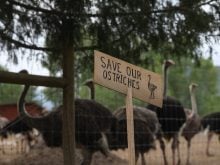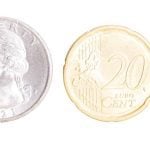Fifteen years after the fact, Canada’s 20th federal agriculture minister remembered the 1970 decision to allow national supply management marketing boards as simply a practical act of logic.
“We could see there was market chaos out there and a way to fix it,” H.A. (Bud) Olson said in 1985.
“That’s all. And there was provincial pressure.”
His matter-of-fact explanation masked one of the most tumultuous and vitriolic parliamentary debates of the era, featuring late-night committee hearings, a raucous cross-country series of hearings and legislative approval in a rare parliamentary session in the days between Christmas and New Year’s, 1971.
Read Also

VIDEO: Agritechnica Day 4: Robots and more robots, Nexat loves Canada and the trouble with tariffs
Agritechnica Day 4: Robots and more robots, Nexat loves Canada and the trouble with tariffs.
The Farm Products Marketing Agencies Act was proclaimed into law in early 1972. The sponsoring government was accused of being communistic.
The Progressive Conservative opposition of the day was convinced it was a government plot to control farming.
And the Liberals, supported by the New Democratic Party, thought it simply was legislation that allowed farmers to create marketing boards if the majority agreed.
The irony of the battle to create national supply management, now seen by many western farmers as a protectionist tool for Ontario and Quebec farmers, is that it was waged in its creation days by westerners.
Olson was a most unusual midwife for the birth of the system of controlled production, fixed prices and protection from imports.
He was a conservative southeastern Alberta rancher and businessperson elected four times as a Social Credit MP for Medicine Hat.
In 1967, he abandoned the disintegrating Socreds for the Liberals, supported Montreal intellectual Pierre Trudeau for the leadership in 1968 and became his first agriculture minister.
The Liberals were faced with low-income crises in poultry, egg and dairy sectors, a movement in provinces to create marketing boards and a demand from farmers that these boards be allowed to become national. Trade wars were breaking out between provinces that only federal legislation could stop. Olson saw it as an industry problem rather than an ideological issue and agreed with proposals for national enabling legislation.
His main opponent was fellow Albertan Jack Horner, a rancher and MP who saw this as communism and the thin edge of the wedge toward a system in which governments would tell farmers what to grow.
“We’ll have a set of controls on farmers worse than they are in Russia,” he raged at the time.
Horner filibustered the legislation, forced all-night hearings and convinced MPs to embark on a two-week committee tour during which prairie livestock producers lined up against the legislation and convinced MPs to exclude cattle and hogs. They were supported by the premiers of Saskatchewan and Alberta.
Olson’s main parliamentary supporter was a Saskatchewan socialist and farm union radical who saw it as simple legislation to give farmers the option of market power.
“To me, it was a culmination of a struggle that had started with the first marketing boards in British Columbia and Prince Edward Island, the CWB (Canadian Wheat Board) in the Prairies and marketing agencies in Ontario,” wrote Alf Gleave, a former NDP MP from Saskatchewan and his party’s agriculture critic.
The legislation made it through an acrimonious Parliament, chicken, egg and turkey agencies were formed and supply management became an instrument for income stability in previously volatile sectors.
“Farmers regarded the minister and the department of agriculture as their champion of everything and if you’re a good politician, you’d better accept that’s the vision they have of you and do something useful for them,” Olson said later.
Within five years, Horner had left the Progressive Conservatives to sit with the Liberals in time to watch his new party create the Canadian Chicken Marketing Agency in 1978.














